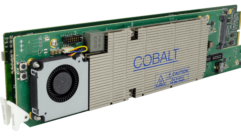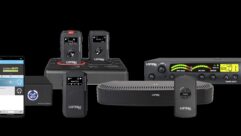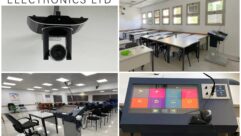

The Black Sea
The National Oceanic & Atmospheric Administration and The Institute for Exploration have been combing the waters searching for ancient mysteries and unearthing new phenomena. Central to their recent missions has been the RTS intercom system that provides unified communications from the world’s most remote locations.
Two of the latest expeditions that
NOAA
and the Institute for Exploration collaborated on were the Secrets of the Gulf Expedition and the 2007 Aegean & Black Sea Expedition.
The Flower Garden Banks
NMS
is one of 14 federally designated underwater areas protected by
NOAA
’s National Marine Sanctuary Program. Located 70 to 115 miles off the coasts of Texas and Louisiana, these underwater communities rise from the depths of the Gulf of Mexico atop underwater mountains called salt domes. The sanctuary actually protects three separate areas: East Flower Garden Bank, West Flower Garden Bank and Stetson Bank. These banks are separated from each other by miles of open ocean ranging from 200 to 400 feet (61-122 meters) deep, and each bank has its own set of boundaries. Management of the sanctuary is accomplished by a staff of eight full-time employees through a combination of education, science, resource protection and regulatory programs.
The 2007 Aegean and Black Sea Expedition consists of three distinct projects – a geological study in the Sea of Crete, an archaeological survey and shipwreck excavation off the coast of Ukraine in the Black sea, and an archaeological investigation of a well-preserved shipwreck off Turkey in the Black Sea. In addition to the scientific objectives, this cruise will be used as an opportunity to test new technologies that will be utilized on board the new
NOAA
ship Okeanos Explorer.
A team of marine archeologists led by Dr. Robert Ballard identified what appeared to be ancient shorelines, freshwater snail shells, drowned river valleys, tool-worked timbers, and man-made structures in roughly 300 feet (100
m
) of water off the Black Sea coast of modern Turkey. Radiocarbon dating of freshwater mollusk remains indicated an age of about 7,000 years.
Naturally, a state-of-the-art international expedition such as this requires a state-of-the-art global communications system. The robust intercom system used to maintain mission-critical communications was a
VoIP
-enabled
that included
,
, and
. Various
including
and
were integrated to provide
VoIP
connectivity.
The
manages intercommunications between separate intercom systems using intercom ports that have been reserved and interconnected between the intercom systems.
or other data devices can then communicate with various destinations in other intercom systems via the reserved intercom ports. (This is different from bus expansion, in which the bus systems of two or more frames are interconnected to form one system with decentralized hardware.)
The
consists of an RTS model
/
and one or more
RTS model ICP-2000 interconnection panels
, depending on the number of intercom systems to be trunked. A backup
/
may also be added to prevent downtime in the event of a failure of the main master control unit. When both main and backup control units are used, an
RTS model SWP-2000 switch over panel
is required.
For more information, visit the RTS Intercom website:










